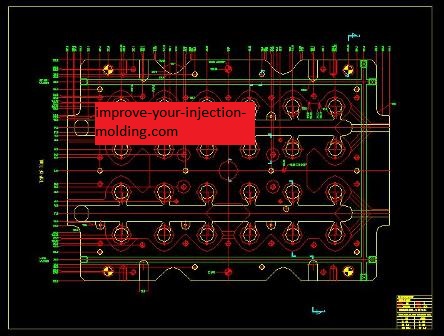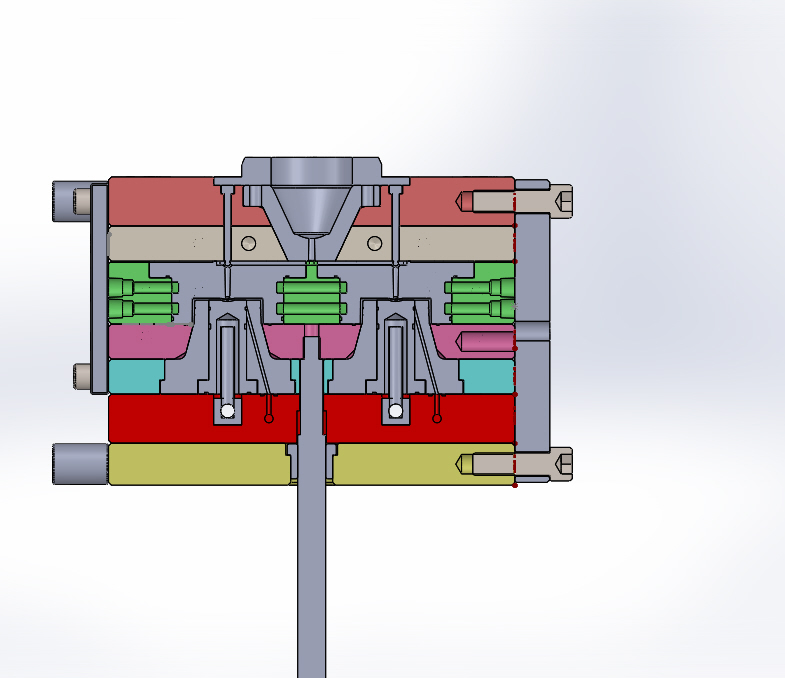- Home
- Lean Principles
- Machine Selection
- Mold Design
- Mold Interlocking
- Mold Making
- Plastic Material Technology
- Molding Process
- Plastic News
- What's New
- Privacy Policy
- Disclaimer
- Site Map
- Poll
- Polishing
- 3D Rapid Prototyping
- Molding Companies
- Contact Us
- Proven Thinwall Packaging Mold Designs For Sale
- MOLD WEIGHT CALCULATOR
- HOT RUNNER VERSUS COLD RUNNER
Injection Mold Design Checklist

An injection mold design checklist enables a mold designer to ask the right questions so that any new mold build will go according to plan and be producing parts in the shortest possible lead-time.
Right-click here to download a checklist in PDF formatYou will need Adobe Reader (the latest version is recommended) installed on your computer in order to open and read this e-book. You can download Adobe Reader here (a new window will open so you can download it without leaving this page).
If you want to open the file in your browser window, just click on the link (not all browsers have this feature). However, if you want to download the file to view later, then right-click on the link and choose "Save Target As" or "Save File As." Then select where you want to save the file on your hard drive.
Once you have saved the file, locate where you saved it, and double click to open it.
In order to print, open the downloaded file, and select the "Print" option from the e-book menu.
1. Part Information
Checklist
- Part shape
- Part size
- Part wall thickness
- Part plastic material
- Surface finish requirement: polishing grade or texture
- In mold labeling or decorating requirement
A part drawing will have all of this information.
The part drawing is then used to pre-determine the following basic mold design:
2. Basic Mold Design
Checklist
- Gate location
- Ejection method
- Parting lines (also called split line)
- Venting positions
- Estimated cycle time
- Basic cooling design
- Interlocking method between fixed and moving sides of mould
- Heat treating requirements such as nitriding on moving mould components
With this information, the ratio of the maximum flow length to wall thickness is be calculated. The maximum flow length is the distance from the gate to the furthest parting line.
This ratio is used to estimate the cavity pressure inside the mould tool during first stage filling. The higher it is the more robust the mould design must be.
These can be determined by experience or by computer simulation software.
3. Annual Production Quantity
The annual production quantity requirement will determine the type of material that the injection mould will made from and the accuracy of the mold build. It will also determine the number of cavities the mould will need.
Checklist
- Annual production quantity
- Number of mould cavities
- Mould material for core and cavity inserts
- Heat treatment requirement for core and cavity inserts
- Mould material for mould bolster
- Heat treatment requirement for mold bolster
4. Molding Machine Specifications
A new injection mold is often required to fit into several different machines in any one molding company for production flexibility. The following platen layout information is required for each machine. This information is supplied by the injection molder.
Checklist
- Location ring diameter
- Space between tie bars (both horizontally and vertically)
- Maximum opening stroke
- Minimum opening stroke
- Minimum die height
- Maximum die height
- Clamp hole size and position
- Maximum machine ejector stroke
- Machine ejector bar positions and diameter
- Platen length and width
- Number of available cooling circuits on machine
- Number of available air lines on machine
- Robot take out or free fall requirement
- Mould clamping technique - direct bolting or use of clamps
5. Additional items to include in injection mold design checklist:
- Hot runner or cold runner
- Pitching distance between cavities
- Pre alignment between fixed and moving halves - usually guide pins and bushes
- Plate thicknesses – especially back plates for mould rigidity
- Sufficient support pillars for mould rigidity
- Mould design for easy mould assembly
- Mould design for easy maintenance in the moulding machine: for example cleaning blocked gates or removing cold runners by hand
- Mould design for easy machine installation and removal
- Corrosion protection coatings such as electroless nickel plating on P20 bolster plates
Return from Injection Mold Design Checklist to Injection Mold Design





